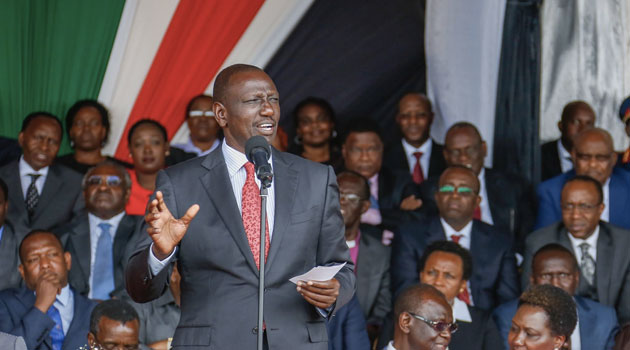 In the 2013 elections ,Uhuru Kenyatta’s political strategists believed that they could not work with William Ruto in their quest for the presidency because he would not agree to play second fiddle, according to a leaked dossier,
In the 2013 elections ,Uhuru Kenyatta’s political strategists believed that they could not work with William Ruto in their quest for the presidency because he would not agree to play second fiddle, according to a leaked dossier,
However, details of how President Uhuru Kenyatta won over his deputy William Ruto against former Prime Minister Raila Odinga in the run-up to the March 4 elections can now be revealed. Interviews with multiple sources within TNA and URP reveal the intrigues, the fears, the schemes and sheer organisation, leading to the steady rise of the Uhuru-Ruto camp despite the huge odds against the ‘ticket’.
First, Uhuru had to convince Ruto to play second fiddle at a time when their two communities were seen too hostile to each to forge an alliance. The decision to back Kenyatta was made by some 13 MPs from the Kalenjin community after a nightlong meeting at Ruto’s home in Karen, Nairobi.

Ruto had invited MPs from his backyard to deliberate their options as the presidential race entered the final stretch. On the table were three options: Back Raila, back Kenyatta or Ruto goes into the elections alone.
At the beginning of the meeting at 8pm, majority of those MPs were in favour of returning to Raila, said an MP who requested not to be named. “Nine MPs were in favour of supporting Raila,” said the MP. “They said Uhuru would be hard to sell to the Kalenjin community,” he added.
Sources said Kigen was even shouted down for his fervent support for Raila. The option of Ruto going it alone was also dismissed on the grounds that it would be expensive and at best, he would finish a distant third behind Kenyatta and Odinga in that order.
“They implored their colleagues that it would be hard to sell the man they had spent four years calling names and that would call to question their moral fibre as leaders of the community,” said the MP.
It was left to the trio to make the case for why they ought to support Kenyatta, another hard sell, given the bad blood between the Kikuyu and Kalenjin communities since the 2007 post-election violence.
The heated meeting nearly turned physical at some point when Kutuny and Konoin MP Julius Kones could not agree on the merits of backing Mr Kenyatta.
In the wee hours of the morning, Uhuru proponents eventually carried the night.  Ruto was mandated to start serious talks with Kenyatta to form an alliance. Nguyai relayed the meeting’s resolution to Uhuru.
Ruto was mandated to start serious talks with Kenyatta to form an alliance. Nguyai relayed the meeting’s resolution to Uhuru.
“He was a little bit surprised by that development,” said another close ally of President Kenyatta. The next day, accompanied by Kuttuny, Chirau Mwakwere and now Senate Speaker Ekwee Ethuro, Ruto met Kenyatta at his offices in Lavington where he personally informed him of the Kalenjin MPs’ decision.

Present in that meeting from Kenyatta’s side were Nominated MP Johnson Sakaja, Uhuru’s personal assistant Njee Muturi and former Justice minister Eugene Wamalwa.
Two days later, they met again in Lavington where Ruto spelt out his demands. One of them was that they would share the Government on a 50-50 basis.
Consequently, a team made of four from both sides, was formed to craft the coalition agreement.
The team comprised Leader of Majority in the National Assembly Adan Duale, Kuttuny, Keter, Mwakwere and Cabinet Secretary nominee Kazungu Kambi.
Members of the committee from Kenyatta’s side were Nominated MP Amina Abdalla, Kiambu Governor William Kabogo and Taveta MP Naomi Shaban. And thus the Jubilee Alliance was born to face off with Raila’s Cord Alliance.
At the meeting, Ruto asked for a month to sell the alliance to the Kalenjin community, which had expressed reservations about supporting Kenyatta. Kuttuny and Keter were mandated to prepare the community for the alliance through radio and other avenues.
As the year drew to an end, Ruto and Kenyatta met to share Cabinet positions, where it is said the latter came out feeling outwitted by the former. “Uhuru came with a list of the Cabinet positions he wanted.
But Ruto outwitted him by proposing they share the positions one by one. Uhuru would pick one post and then Ruto would pick the next until the positions were exhausted. That’s how Ruto’s side came out with strong ministries,” said an MP privy to the meeting.